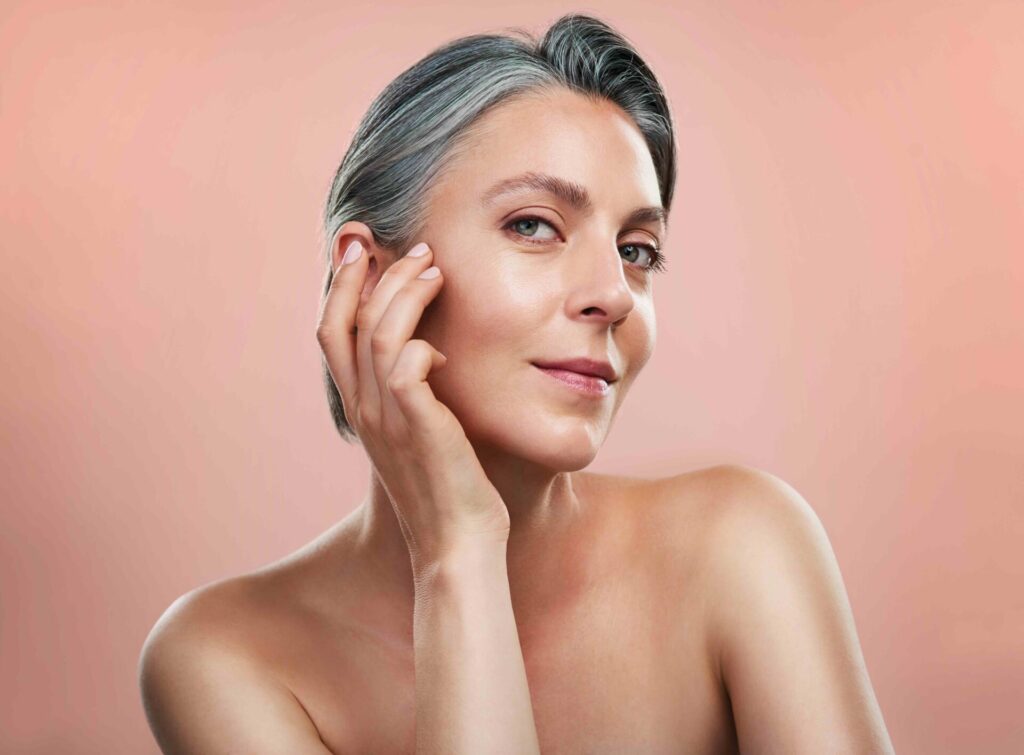Photo credit: PeopleImages/iStock/Getty Images Plus
“Precancerous” is a scary word, but not as scary as the “c” word. If you heard it from your doctor, you’d want to make sure it was diagnosed and treated before it could develop further, right?
As a dermatologist and Mohs surgeon, Deborah S. Sarnoff, MD, is an expert on precancerous lesions called actinic keratoses (AKs). In her 35-plus years of practice in New York City and Long Island, she has probably seen tens of thousands of these problematic patches on the skin of her patients. Here’s what she wants you to know.
What Does “Precancerous” Mean, Exactly?
It means that a very small percentage of AKs develop over time into squamous cell carcinoma (SCC), the second most common type of skin cancer. A very small subset of those may spread or metastasize and become dangerous or even deadly. However, Dr. Sarnoff is quick to reassure her patients about the odds. “You can argue about what is the statistic on a particular AK turning into an SCC,” she says. “I try to explain to them that, honestly, nobody knows for sure.”
A 2021 study in JAMA Dermatology found that at about four years of follow-up, just under 9 percent of patients with AKs developed SCC. At 10 years of follow-up, the incidence of SCC in patients diagnosed with AKs was about 17 percent. The risk does increase over time, but despite the statistics, she explains, “The point is, it’s rare to have invasive SCC. And we have very good treatment options.”
Who’s Most at Risk?
“AKs arise from exposure to ultraviolet (UV) radiation from the sun or from tanning beds, which causes mutations in the DNA of skin cells,” says Dr. Sarnoff. “They are very common in Caucasian people. I don’t see them often in people of color. I see fewer AKs in younger people and more in people 50-plus. And men tend to get them more than women. Those who are immunocompromised or who have had an organ transplant are at especially high risk.”
She knows her demographics. A 2022 study in JAMA Dermatology of a large group of Medicare patients 65 and older found that nearly 30 percent were diagnosed with one or more AKs. This included more men than women, and the vast majority were non-Hispanic white patients. A 2005 report on the burden of skin disease in the U.S. estimated about 58 million AKs a year, and it’s probably more than that by now. For many patients, Dr. Sarnoff explains, AKs are not a one-and-done problem but become chronic, from sun damage over a lifetime. They are often grouped in an area, such as the scalp, also known as a “field.”
When a patient has multiple AKs, they are likely more at risk for skin cancer, and not just SCCs. Another study in JAMA Dermatology in 2023 found that older adults with AKs have a higher risk for all skin cancers, including SCC, basal cell carcinoma (BCC) and melanoma, and the study authors concluded that these patients should be monitored closely. “For many of my high-risk patients,” Dr. Sarnoff says, “getting checked regularly becomes a way of life.
“A dermatologist can see the cumulative damage from the sun,” she explains. “That helps us to encourage those who are more at risk to be using sunscreen, UPF clothing and all the sun protection methods that The Skin Cancer Foundation stands for.” Regular use of sun protection can help prevent future AKs and SCCs. But it is hard to know who will develop skin cancer. A precancer doesn’t light up like a neon sign. In fact, she says, “There are people who go on to get lots and lots of AKs and never get a skin cancer. So that’s possible, too.”
But … You Need to Stay on Top of It
Dr. Sarnoff recommends that you get to know your skin and look for anything new, changing or unusual. The size of an AK can range from a tiny spot to the size of a coin — or sometimes a whole field of spots. When you’re at your dermatologist’s office, the lighting may be better than what you have at home. Doctors also can see parts of you that you can’t, and they often use some kind of magnification to help see things on the skin more clearly. If an AK is a bit tan, pink, red or irritated, the doctor likely can see it.
But when AKs don’t look like much of anything at all, that’s where feel comes in. AKs are known for having a different texture than surrounding skin. “Since dermatologists wear gloves nowadays,” Dr. Sarnoff says, “it can be more difficult to feel the skin texture through a glove. So your dermatologist may ask you if you have anything on your skin that feels a little different.” How can you prepare for your next visit with this in mind and be a partner in early detection?
To Find an AK, Feel Your Way
AKs are common on the face, the edges of the ears and the scalp, especially in bald areas or in areas where hair is thinning or always parted. The decolletage, or V-neck area, and the backs of your hands, where most people neglect to apply sunscreen regularly, are also a breeding ground. So are the shins.
AKs are often described as feeling like sandpaper. But yours may not feel like the industrial kind you have in the garage for removing old paint or rust. It may feel more like your nail file, sometimes even more like the subtle “smoothing” side than the “shaping” side.
A tip from Dr. Sarnoff, for those of you who pat on foundation, tinted sunscreen or concealer, is to notice if it doesn’t go on smoothly like it does elsewhere. If it gets kind of flaky or cakey in an area, especially around the eyes, or even feels like it’s making little skin “crumbs,” that could be an AK. What you’re feeling, Dr. Sarnoff says, are “tiny micro mutations in the DNA.”
“If you use a retinol serum or cream, or a product that has vitamin C, glycolic acid or other alpha hydroxy acids,” she says, “these increase cell turnover and can make an AK slightly red or inflamed. It might sting or burn more than it does on surrounding skin and might feel itchy.” She says products that physically exfoliate, such as scrubs or textured sponges, can also cause an AK to look or feel inflamed.
You don’t have to be a bald man for AKs to develop on your scalp. “Your hair doesn’t protect that well from the sun, so you might check your scalp for anything that feels rough when you’re shampooing your hair,” she suggests. And sometimes an AK may grow outward into a little point, like a tiny devil horn. These, in fact, are called cutaneous horns.
Also, she says, don’t forget your ears. “Sometimes I ask patients, ‘Do you feel anything that’s like a little Rice Krispy? Yes, the cereal! If you run your finger along, say, the outer rim of your ear, does it feel like one of those crispy little bits? Write it down or put a note in your phone with a date of when you first noticed it. Point it out to your dermatologist.”
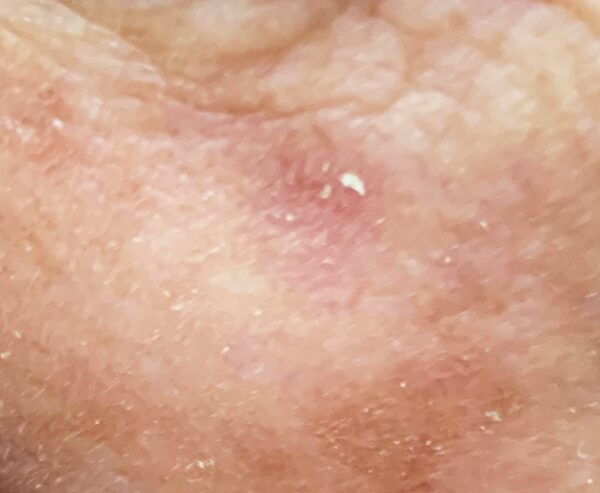
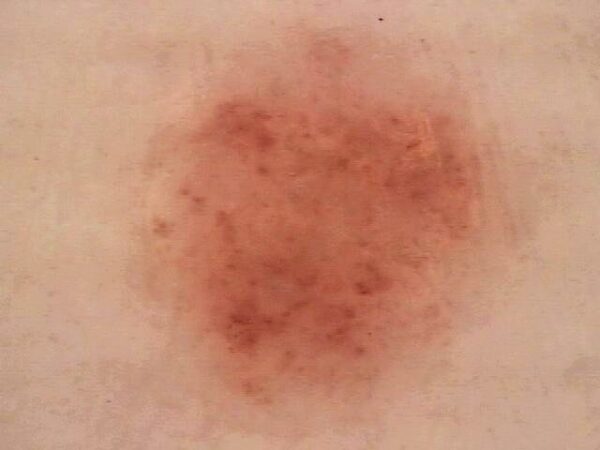
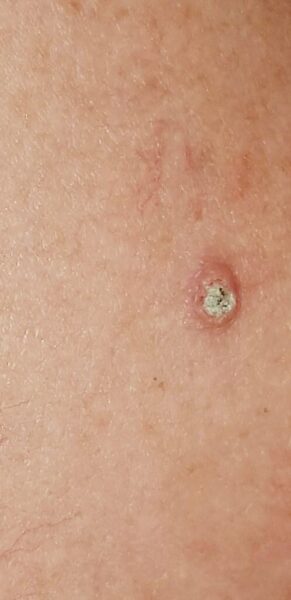
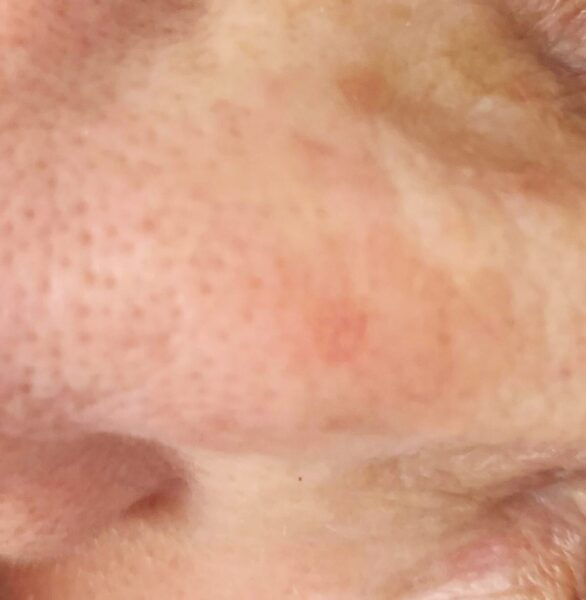
The Many Ways of AKs: They may look tan, red, pink, crusty or inflamed, but sometimes AKs look like nothing. They often feel dry and rough, though, similar to sandpaper.
Photos: International Skin Imaging Collaboration at isic-archive.com
Other Types of AKs You Might Feel
Hypertrophic AK: This type has a slightly different feel, Dr. Sarnoff explains, as the dead skin cell layer on the top piles up and gets very thick. So when you rub your hand over it, it feels raised and more like a wart. “We call that a hypertrophic AK,” she says, “but it doesn’t mean it’s more dangerous. It is still very high up in the top layer of the skin.”
Pigmented AK: AKs can also occasionally have a tan or brown color to them. Dr. Sarnoff says, “They can be confused with an age spot or a common benign growth known as a seborrheic keratosis. A trained eye can usually tell the difference, but sometimes you need a biopsy to be 100 percent sure.”
What Comes Next?
Most dermatologists can diagnose AKs by look and feel. Sometimes, as when it is pigmented, they may need to remove a small tissue sample and send it to a lab for examination under a microscope to confirm it before treatment. If a suspected AK is inflamed, tender, bleeding, growing rapidly or persistent after another treatment, it may be on its way to early (in situ) SCC, so a biopsy is usually necessary to confirm that before treatment. It’s better to know for sure and get it treated early, she says.
Whether you have one AK, several AKs or a distinct field of AKs, there is a diverse range of good treatments available. Many are reimbursed by insurance. Some come with antiaging benefits.
Sometimes patients need more than one treatment, or a combination of treatments. You and your dermatologist can discuss these treatment options and determine what is right for you. For more information, visit our AK pages.


